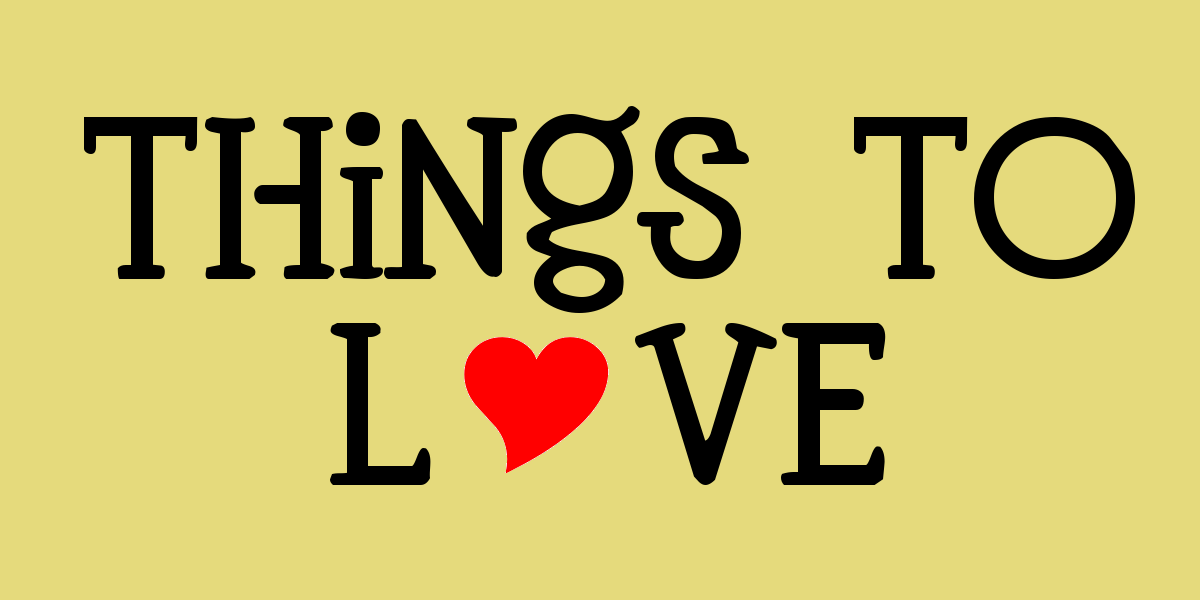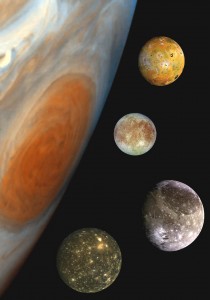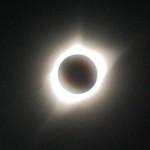Things to Love #5: Astronomy: Four Galilean Moons
Jupiter.
It’s the biggest planet in our solar system. It has a distinctive red spot, a raging storm that never seems to end. It has more moons than any other planet. And four of them are special. They’re huge. Like, planet huge.
About the size of small planets, the four largest moons of Jupiter are fun and easy to spot in the night sky. Figure out where Jupiter is (you can often do this just by looking, but there are planispheres and even phone apps that will help), and then turn your telescope in that direction, seeing the moons in all their glory. Even their names are majestic.
Io. Ganymede. Callisto. Europa.
Independently discovered in 1610 by both Galileo Galilei and Simon Marius, viewing these moons through my telescope is always my go-to option for seeing something interesting and easy to find. Galileo found them after improving his telescope to be able to magnify 20x. At first, he only saw three, but after continued observation, the fourth made itself known.
This was news. A planet other than the Earth with moons? The Ptolemaic geocentric model of the solar system meant that no other planets had moons. Well, Ptolemy was probably rolling over in his grave at this point.
Check out NASA’s official handout for Jupiter’s moons, or read some facts below.
Io
Named after Io of mythology who was a priestess of Hero, and Zeus’s lover, the moon Io is full of volcanic activity, with over 400 active volcanoes. This makes it the most geologically active body in the solar system and means its surface is one of the youngest. The volcanoes are constantly outgassing, leading to the sulfur that affects the moon’s color. It has a molten iron or iron sulfide core, and there is some evidence that it may have a magnetic field, but it hasn’t yet been proven.
Ganymede
The largest moon in the solar system, this one is even bigger than the planet Mercury. Ganymede was named after mythological Ganymede, official cup-bearer and another of Zeus’s conquests (he sure gets around). With a diameter of 5262.4km, it is the only known moon to have its very own magnetic field (that we know of, see above), generated from its liquid iron core. Its surface is made from water ice (as opposed to something else frozen), and it has a thin oxygen atmosphere. Areas of its surface are dark and cratered, with old geology, and others are lighter without craters, pointing to newer geology. This moon always reminds me of Robert Heinlein.
Callisto
Callisto’s name was also inspired by mythology. She was the daughter of King Lykaon and was Artemis’s hunting companion. But around Jupiter, Callisto is made of about equal parts ice and rock, making it the least dense of Jupiter’s moons. It is covered in craters. It might have an ocean of liquid water below the surface, which could harbor life. Since, of these four moons, it is the farthest away from Jupiter, it is least affected by Jupiter’s radiation and gravitational pull, and might be suitable for building a base of human exploration.
Europa
Slightly smaller than Earth’s moon, Europa is the smallest of the four Galilean moons at 3121.6km in diameter. In mythology, Europa was courted by Zeus (there he goes again) and became queen of Crete. Its surface is very smooth with ice, and it is thought that there is a sub-surface ocean as well. Many theories exist as to why Europa’s surface has the straight marks on it, including the fact that one side is always facing Jupiter. But we’re not sure of the actual cause. The surface has no impact craters, indicating enough geologic activity to keep the surface looking young.
When I first got my telescope (a 6-inch Dobson reflective), spotting Jupiter and its moons were high on my list of things to spot. After I’d blinded myself a couple of times by the moon (before I figured out how to use my lunar filter), I aimed it at Jupiter. It was easy to find, being one of the brightest lights in the night sky. It looked just as it should, with bands of texture. But seeing its four largest moons “float” around it, all in the same plane, was quite extraordinary to see. My daughter, the science nut, and I easily spent an hour taking turns admiring the sight, between my telescope adjustments.
Jupiter is one of the easiest things to find in the night sky, and, because of this, you get a lot of bang for your buck to admire it and its moons. Lots of enjoyment. Give it a try.



